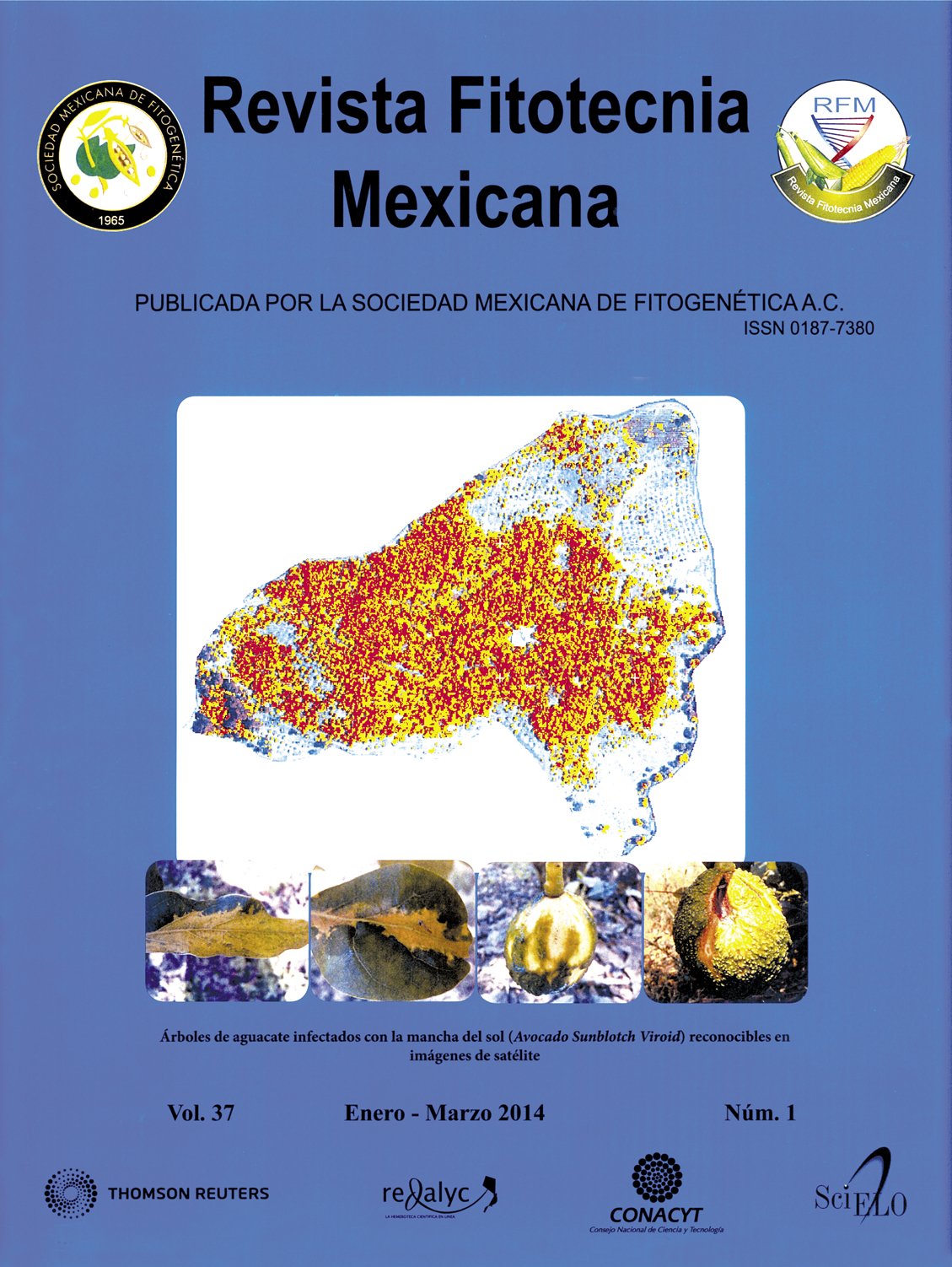DEHYDRINS PATTERNS IN COMMON BEAN EXPOSED TO DROUGHT AND WATERED CONDITIONS
Main Article Content
Abstract
Drought is a major constraint for common bean (Phaseolus vulgaris L.) production in México. Dehydrins are constitutive or stress-induced proteins related with a protective role of membranes and macromolecules against denaturation, thus preventing loss of their function. In this work, seed production and patterns of dehydrins accumulation in leaves and pods were evaluated in common bean cv. ‘Otomí’ subjected to drought, as compared with well-irrigated plants. Drought applied at pod formation and seed filling (SF) reduced yield up to 57 %. An antibody against a consensus sequence present in most dehydrins allowed for dehydrin identification. Two dehydrins of 82 and 73 kDA turned up both in leaves and pods throughout all the evaluated conditions. Presumably, both dehydrins are constitutive in the ‘Otomí’ cultivar. These dehydrins showed higher expression than controls in leaves after 6 d of drought at seedling and SF stages, and in pods 6 d after drought had started at SF. Increased expression might provide better protection during early stages of seedling and seed development. Increments on 63, 36 and 22 kDa dehydrin expression in pods at late SF might coincide with plant developmental programs, which prepare seed for desiccation. Dehydrins of 158, 54, 46, and 41 kDa were detected in pods 10 d after floral opening as a transient response to drought stress in SF. These results indicate dehydrins are relevant during plant development, as well as during drought stress.

